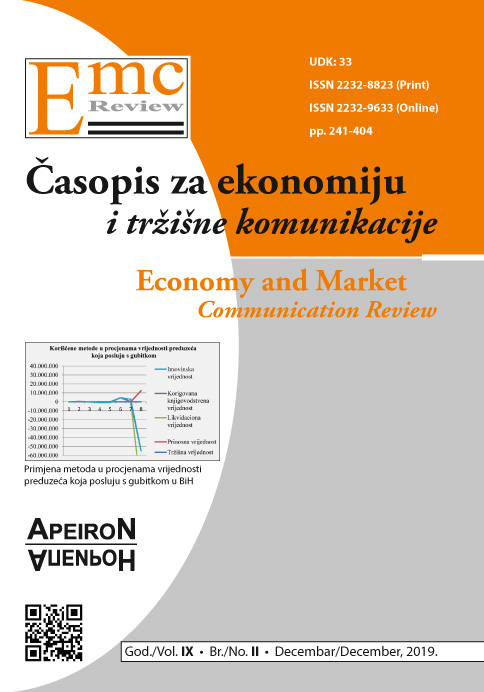THE APPRAISAL OF THE COMPANIES WITH NEGATIVE EARNINGS / PROCJENA VRIJEDNOSTI PREDUZEĆA KOJA POSLUJU S GUBITKOM
DOI:
https://doi.org/10.7251/EMC1902277SAbstract
A large body of valuation literature comes from the theoretical assumption that businesses operate on a going-concern principle and earn profit in the long-term, except for the liquidation method. When assumptions about going-concern principle and profit-earning are met, it is not too difficult to make cash flow projections and determine the entity’s estimated value. However, for businesses with negative earnings, the problems and concerns of valuation are multiplied. The research aims to point out the specificities of companies with negative earnings and possible ways of overcoming the barriers in valuing such businesses. For companies with temporary problems, it is assumed they will earn profits again in the short term, and instead of losses, stabilized earnings will be generated. One possible solution is in adjusting the expected growth rate in the future period and the other assumes the estimation based on stabilized earnings. In the other group of companies, losses are a manifestation of larger and more serious problems, and it is necessary to estimate whether the problems will be overcome and, if so, when that will occur. Poor strategic decisions, business inefficiencies and over-indebtedness can be the causes of long-term problems in companies. According to the depth of crisis: the liquidation method should be applied if the problems are permanent and serious, and other valuation methods in opposite cases. The first part of the empirical research relates to the comparative analysis of 20 companies’ valuations in Republic of Srpska, and the second part to the analysis of the data collected by the questionnaire method, on a sample of 78 appraisers who hold the license of the certified appraiser. Methods from the domains of correlation analysis, descriptive statistics and statistical inference are used to quantify and process the data and to calculate the qualitative indicators. The results show that in practice, in most cases, three or four valuation methods are applied. For companies with negative earnings, the adjusted book value was determined in 100% and the liquidation value in 87.5% of appraisals. For firms with temporary problems, 94% of appraisers prefer adjusting growth rates and 86% stabilizing earnings when applying income approach methods. Examining influential factors that can affect solving of operational problems in companies with long-term problems, four groups of factors were identified, the most significant being the nature of inefficiencies and the quality of top management. In the valuation of companies where over-indebtedness is the cause of problems, and which are operationally sound, the most used method is a modification of debt ratios, in 76.9% of cases. APV method is used in 35.9% of these companies’ valuations. Valuation of companies whose bankruptcy is almost a certain option is done by liquidation method in almost 98.7% of appraisals. We conclude that in the appraisal of companies with negative earnings, it is crucial to identify the causes of problems and the possibilities of eliminating them, recognizing the ability of entities to continue operating on a going-concern principle and assumptions related to the inactive capital market in BiH.Downloads
Published
2020-03-03
Issue
Section
Чланци
